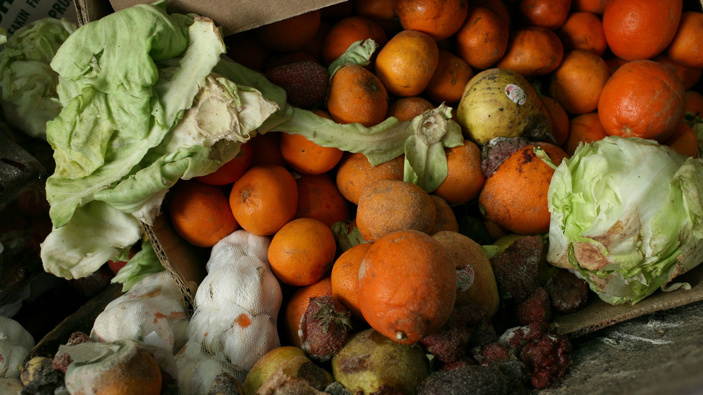Bokashi
New Zealand households throw away 157,389 tonnes of food a year. That is equivalent to 271 jumbo jets of food that has to go somewhere to rot, instead of being eaten. All of this food is worth about $1.17 billion each year. That amount of food could feed the population of Dunedin for nearly three years!
So why not investigate turning your food waste, at home, into soil gold by the little-known method of Bokashi.
You will all have noticed how foods like sauerkraut, kefir and kombucha have started to dominate the supermarket aisles. What they share in common is they are fermented foods that have been shown to have a healthy effect especially on your gut bacteria.
This is the special thing about Bokashi, instead of your food waste being decomposed to make a compost or even worm casting, it is fermented.
I love composting and have been doing it for almost forty years. It adds structure and humus to my gardens and make the plants healthier. But the decomposing process loses the majority of its carbon and energy in the process. This is through it heating up, gassing off and it even loses its nitrogen as nitrous oxide and ammonia.
Put all your scraps into a sealed container. The fermentation process means you can put significantly more kinds of food than with composting. Even cooked food, meat, fat, cheese, and citrus waste are pre-digested to enable soil life to consume them. And you don’t have to worry about rats eating these scraps as it is a sealed container. The food scraps are inoculated with Lactobacilli. This comes contained in prepared grains that you add to the mix. This converts some of the carbohydrates to lactic acid by homolactic fermentation.
The scraps are fermented anaerobically (without air) for a few weeks, much like making sauerkraut. This mixture can then be added to the soil or stored for later use
As it is mixed into the soil, it is exposed to the air. The partial lactic acid in the mix oxidises to Pyruvate, a fundamental energy carrier (provides energy to cells) in biological processes. The soil life goes to work and the worms go crazy. Often the soil ends up looking like worm castings. And super fertile.
Because the fermentation process breaks no carbon bonds and emits no gas it retains all the goodies of the original food scraps but passes these on to new plants. The Bokashi bins also produce liquid, Bokashi tea. In this it is different than say worm bins where this is a stand-alone Fertilizer. Bokashi tea is best added to where the rest of the Bokashi solids are as it can be a bit acidic by itself.
The batch size after a few weeks can be 5-10 kegs and it is best to only add new material once a day to keep the anaerobic process going.
The other advantage of the lactic acid production is that lactic acid is a strong natural bactericide. We used it in ecostore toilet cleaner, for example. Thus, the process is inherently hygienic and will kill off bad bugs.
Adding it to the soil can be done by digging a trench where you later want your vegetables, you can designate an area of your garden for creating amazing soil that you later spread to places it is needed.
LISTEN TO AUDIO ABOVE
Take your Radio, Podcasts and Music with you










